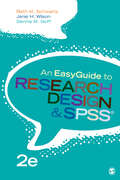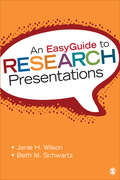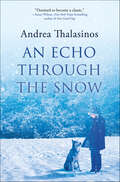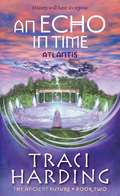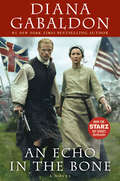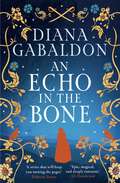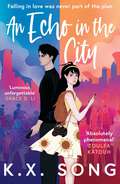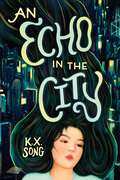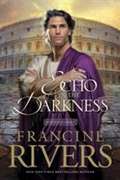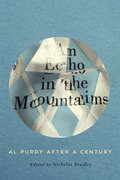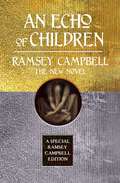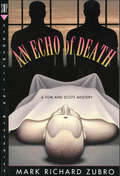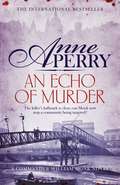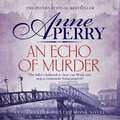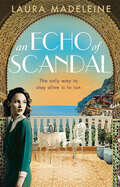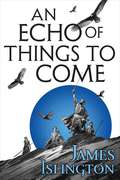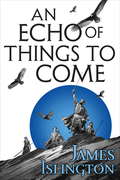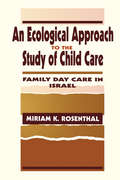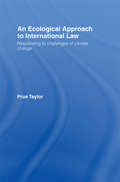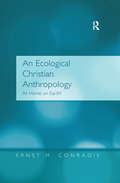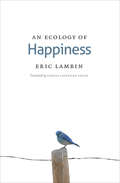- Table View
- List View
An EasyGuide to Research Design & SPSS (EasyGuide Series)
by Janie H. Wilson Beth M. Schwartz Dennis M. GoffAn EasyGuide to Research Design and SPSS® is an essential resource for students to successfully navigate and complete research projects. Using a clear, concise, and conversational writing style, authors Beth M. Schwartz, Janie H. Wilson, and Dennis M. Goff cover all of the most basic and common designs and analyses that students need to know for appropriately testing a hypothesis. The handbook includes step-by-step instructions accompanied by ample screenshots for working with data in SPSS®, along with guidance on interpreting outputs and formatting results in APA style. The Second Edition features a streamlined organization, updated references, and new content on factorial designs, effect size, and G*Power.
An EasyGuide to Research Presentations
by Dr Janie H. Wilson Dr Beth M. SchwartzAn EasyGuide to Research Presentations is an invaluable tool for helping readers learn the ropes of presenting original research and experience the thrill of becoming part of a strong scientific community. With coverage from poster presentations and symposia to oral and video presentations, this handbook offers a concise, easy-to-read guide on professionally presenting research in virtually all formats. Drawing from their own experiences as researchers, authors Janie H. Wilson and Beth M. Schwartz use a conversational style to address such topics as how to connect with an audience, presentation pitfalls, publishing and sharing results, and more.
An Echo Through the Snow: A Novel
by Andrea ThalasinosA Wisconsin woman embarks on a transformative journey when she rescues a neglected Siberian husky in this inspiring debut novel.Rosalie MacKenzie is headed nowhere until she sees Smokey, a Siberian husky suffering from neglect. Rosalie finds the courage to rescue the dog, and—united by the bond of love that forms between them—they save each other.Soon Rosalie and Smokey are immersed in the world of competitive dogsled racing. Days are filled with training runs, the stark beauty of rural Wisconsin, and the whoosh of runners on snow. Rosalie discovers that behind the modern sport lies a tragic history: the heartbreaking story of the Chukchi people of Siberia. When Stalin’s Red Army displaced the Chukchi in 1929, many were killed and others lost their homes and their beloved Guardians—the huskies that were the soul and livelihood of their people.Alternating between past and present, telling of a struggling Chukchi family and a young woman discovering herself, An Echo Through the Snow takes readers on a gripping, profound, and uplifting dogsled ride to the Iditarod and beyond, on a journey of survival and healing.“A sensitive and engaging story which beautifully illustrates the ancient human/canine bond. [Thalsinos’s] rendering of the little-known story of the Chukchi people of Siberia is heart-wrenching and uplifting at the same time. The interwoven stories of Jeaantaa and Rosalie and the dogs that mean so much to them is destined to become a classic.” —Susan Wilson, New York Times–bestselling author of One Good Dog
An Echo in Time: Atlantis (Ancient Future, Volume #2)
by Traci HardingWhen her husband falls victim to a mysterious plague, Queen Tory seeks help from the goddess who tells her to travel back in time to Atlantis. Once there, Tory must struggle to find a cure and save her people.
An Echo in the Bone (Outlander #7)
by Diana GabaldonA new Outlander novel — the seventh — from #1 National Bestselling author Diana Gabaldon.Readers have been waiting with bated breath for the seventh volume in bestselling author Diana Gabaldon’s epic Outlander saga — a masterpiece of historical fiction featuring Jamie and Claire, from one of the genre’s most popular and beloved authors.Jamie Fraser, erstwhile Jacobite and reluctant rebel, knows three things about the American rebellion: the Americans will win, unlikely as that seems in 1778; being on the winning side is no guarantee of survival; and he’d rather die than face his illegitimate son — a young lieutenant in the British Army — across the barrel of a gun. Fraser’s time-travelling wife, Claire, also knows a couple of things: that the Americans will win, but that the ultimate price of victory is a mystery. What she does believe is that the price won’t include Jamie’s life or happiness — not if she has anything to say.Claire’s grown daughter Brianna, and her husband, Roger, watch the unfolding of Brianna’s parents’ history — a past that may be sneaking up behind their own family.From the Hardcover edition.
An Echo in the Bone: A Novel (Outlander #7)
by Diana GabaldonDiana Gabaldon’s brilliant storytelling has captivated millions of readers in her bestselling and award-winning Outlander saga. In An Echo in the Bone, the seventh volume, Gabaldon continues the extraordinary story of the eighteenth-century Scotsman Jamie Fraser and his twentieth-century time-traveling wife, Claire Randall. Jamie Fraser, former Jacobite and reluctant rebel, is already certain of three things about the American rebellion: The Americans will win, fighting on the side of victory is no guarantee of survival, and he’d rather die than have to face his illegitimate son—a young lieutenant in the British army—across the barrel of a gun. Claire Randall knows that the Americans will win, too, but not what the ultimate price may be. That price won’t include Jamie’s life or his happiness, though—not if she has anything to say about it. Meanwhile, in the relative safety of the twentieth century, Jamie and Claire’s daughter, Brianna, and her husband, Roger MacKenzie, have resettled in a historic Scottish home where, across a chasm of two centuries, the unfolding drama of Brianna’s parents’ story comes to life through Claire’s letters. The fragile pages reveal Claire’s love for battle-scarred Jamie Fraser and their flight from North Carolina to the high seas, where they encounter privateers and ocean battles—as Brianna and Roger search for clues not only to Claire’s fate but to their own. Because the future of the MacKenzie family in the Highlands is mysteriously, irrevocably, and intimately entwined with life and death in war-torn colonial America. With stunning cameos of historical characters from Benedict Arnold to Benjamin Franklin, An Echo in the Bone is a soaring masterpiece of imagination, insight, character, and adventure—a novel that echoes in the mind long after the last page is turned.BONUS: This edition includes an excerpt from Diana Gabaldon's Written in My Own Heart's Blood.
An Echo in the Bone: Outlander Novel 7 (Outlander #7)
by Diana GabaldonTHE TRIUMPHANT SEVENTH NOVEL IN THE MULTI-MILLION BESTSELLING OUTLANDER SERIES.The year is 1777. The place, North Carolina. And as the American rebellion grows in intensity, Highlander Jamie Fraser and his wife Claire need to decide which side their family is going to be on.The choice should be an easy one, given that Claire was born in the twentieth century and has already seen the future - in history books. But things are never simple where the Frasers are concerned, as father and son unwittingly come face to face on the battlefield, and an old adversary reaches forward in time to threaten the next generation.Up to now, Claire and Jamie's love has survived every danger history has put in their path, but in the chaos of war, with families bitterly divided against each other, is the future finally going to catch up with them?
An Echo in the City
by K. X. SongSUMMER, 2019 PHOENIX attends a protest rally with her older brother, and it ignites a fire in her she didn&’t know she had. The island city she loves is disappearing and she&’s determined to capture the moment on camera. That night she accidentally swaps phones with the enigmatic Kai. KAI never wanted to be a policeman, but his estranged father enrolled him in the Academy anyway. A chance encounter with a group of student protestors offers him a way to earn his father&’s approval once and for all: by going undercover and infiltrating their network. Sparks fly between Phoenix and Kai, drawing them together even as they stand on different sides of the struggle. But when love is built on a lie, what chance does it have to survive?
An Echo in the City
by K. X. Song&“A gorgeous, stirring book; a stellar debut.&” ―Jeff Zentner, award-winning author of The Serpent King Star-crossed teens meet during the Hong Kong protests in this searing contemporary novel about falling in love in a time of change, for fans of Malinda Lo and Axie Oh. Sixteen-year-old Phoenix knows her parents have invested thousands of dollars to help her leave Hong Kong and get an elite Ivy League education. They think America means big status, big dreams, and big bank accounts. But Phoenix doesn&’t want big; she just wants home. The trouble is, she doesn&’t know where that is … until the Hong Kong protest movement unfolds, and she learns the city she&’s come to love is in danger of disappearing. Seventeen-year-old Kai sees himself as an artist, not a filial son, and certainly not a cop. But when his mother dies, he&’s forced to leave Shanghai to reunite with his estranged father, a respected police officer, who&’s already enrolled him in the Hong Kong police academy. Kai wants to hate his job, but instead, he finds himself craving his father&’s approval. And when he accidentally swaps phones with Phoenix and discovers she&’s part of a protest network, he finds a way to earn it: by infiltrating the group and reporting their plans back to the police. As Kai and Phoenix join the struggle for the future of Hong Kong, a spark forms between them, pulling them together even as their two worlds try to force them apart. But when their relationship is built on secrets and deception, will they still love the person left behind when the lies fall away? Perfect for fans of:★ Romeo and Juliet★ Star-crossed lovers trope★ Activism★ Diaspora lit★ International politics
An Echo in the Darkness (Mark of the Lion #2)
by Francine RiversHaving narrowly escaped death, Hadassah conceals her scars--and identity--with veils. But it is her God-given ability to heal others that brings her to perhaps her greatest trial. God's forgiveness and redemption triumph as this young woman, assumed to be dead, is called to risk her life for the one who would have destroyed her.
An Echo in the Mountains: Al Purdy after a Century
by Nicholas BradleyFrom the 1960s until his death in 2000, Al Purdy was one of the most prominent writers in Canada, famous for his frank language and his boisterous personality. He travelled the country and wrote about its people and places from Newfoundland to Vancouver Island. A central figure in the CanLit explosion of the sixties and seventies, Purdy has been called the best, the most, and the last Canadian poet. But Purdy's Canada no longer exists. A changing country and shifting attitudes toward Canadian literature demand new perspectives on Purdy's impact and accomplishments. An Echo in the Mountains reassesses Purdy's works, the shape of his career, and his literary legacy, grappling with the question of how to read Purdy today, a century after his birth and in a new era of Canadian literature. Contributors to the volume examine Purdy's critical reception, explore little-known documents and textual problems, and analyze his representations of Canadian history and Indigenous peoples and cultures. They show that much remains to be discovered and understood about the poet and his immense body of work.The first sustained examination of Al Purdy's works in over a decade, An Echo in the Mountains showcases the critical challenges and rewards of rereading an iconic and influential Canadian writer.
An Echo of Children (Special Ramsey Campbell Edition)
by Ramsey CampbellA slow burn, chilling horror in a gorgeous edition. Ramsey Campbell always delivers...Coral and Allan Clarendon have just moved to the seaside town of Barnwall with their young son Dean. If an uncommon number of children have died unnaturally in Barnwall throughout history, surely Dean must be safe with his parents. Could their house be a source of peril? Allan and Coral seem to think so, since they call for an exorcism. Allan&’s father Thom believes his wife is wrong to think the ceremony has left Dean in worse danger. But if she&’s alone in seeing the terrors that are gathering around him, how desperate will her solution have to be?The Ramsey Campbell Special Editions. Campbell is the greatest inheritor of a tradition that reaches back through H.P. Lovecraft and M.R. James to Mary Shelley's Frankenstein and the early Gothic writers. The dark, masterful work of the painter Henry Fuseli, a friend of Mary Wollstonecraft, is used on these special editions to invoke early literary investigations into the supernatural.
An Echo of Death: A Tom And Scott Mystery (Tom & Scott Mysteries #5)
by Mark Richard ZubroTom Mason and his lover, professional baseball player Scott Carpenter, go on the run when they find an ex-teammate and friend of Scott's murdered in their apartment. With the killers now on their trail, with the death of Scott's friend still a mystery, and with the discovery that they are on the police department's list of murder suspects, Tom and Scott are forced into a dangerous game of hide-and-seek to solve the murder and to ensure their own survival."Readers have both campy humor and an action-filled plot to keep them entertained. Highly recommended for all fiction collections - this one's a good read in every sense of the term!" - Booklist
An Echo of Murder: A William Monk Novel (William Monk #23)
by Anne PerryIn this riveting new William Monk novel, Anne Perry delves into the diverse population of Victorian London, whose disparate communities force Monk to rethink his investigative techniques—lest he be caught in the crosshairs of violent bigotry. In the course of his tenure with the Thames River Police, Commander Monk has yet to see a more gruesome crime scene: a Hungarian warehouse owner lies in the middle of his blood-sodden office, pierced through the chest with a bayonet and eerily surrounded by seventeen candles, their wicks dipped in blood. Suspecting the murder may be rooted in ethnic prejudice, Monk turns to London’s Hungarian community in search of clues but finds his inquiries stymied by its wary citizens and a language he doesn’t speak. Only with the help of a local pharmacist acting as translator can Monk hope to penetrate this tightly knit enclave, even as more of its members fall victim to identical brutal murders. But whoever the killer, or killers, may be—a secret society practicing ritual sacrifice, a madman on a spree, a British native targeting foreigners—they are well hidden among the city’s ever-growing populace. With the able assistance of his wife—former battlefield nurse Hester, who herself is dealing with a traumatized war veteran who may be tangled up in the murders—Monk must combat distrust, hostility, and threats from the very people he seeks to protect. But as the body count grows, stirring ever greater fear and anger among the Hungarian émigrés, resistance to the police also increases. Racing time and the rising tide of terror all around him, Monk must be even more relentless than the mysterious killer, or the echoes of malice and murder will resound through London’s streets like a clarion of doom. PRAISE FOR ANNE PERRY AND HER WILLIAM MONK NOVELS Revenge in a Cold River “The storytelling is dazzling, as it always is in a Perry novel.”—The New York Times Book Review Corridors of the Night “[A] suspenseful, twisting narrative.”—Historical Novels Review Blood on the Water “One of Ms. Perry’s most engrossing books [gallops] to a dramatic conclusion.”—The Washington Times Blind Justice “[Perry’s] courtroom scenes have the realism of Scott Turow.”—Huntington News Acceptable Loss “Masterful storytelling and moving dialogue.”—The Star-Ledger
An Echo of Murder: A thrilling journey into the dark streets of Victorian London (William Monk Mystery #23)
by Anne PerryThe killer's hallmark is clear; can Monk now stop a community being targeted? The master of the Victorian crime, New York Times bestselling author Anne Perry returns with the twenty-third novel in the William Monk series An Echo of Murder. Perfect for fans of C. J. Sansom and Ann Granger.'Anne Perry's Victorian mysteries are marvels of plot construction... truly remarkable' - New York Times London, 1870: The body of a Hungarian immigrant is found dead in what appears to be a ritualistic killing, with a bayonet through his heart, his fingers broken and his body surrounded by seventeen blood-dipped candles. At first, Commander William Monk of the Thames River Police suspects the killer is from within the community, but when another murder takes place, Monk fears the immigrants are being targeted by an outsider...Meanwhile, Hester is reunited with a doctor who had been left for dead on a Crimean battlefield. Traumatised by his experiences, Fitz has made his way home via Hungary and is now living in the community. Hester is determined to help him and, when he is accused of the killings, she sets out to prove his innocence... What readers are saying about the William Monk Mysteries: 'Perry is an agile word painter - so perfectly describing the sights and sounds of Victorian London from the dark Limehouse area to the posh West End that one feels transported to a different time and place''The reader becomes immersed in the tension' 'The characters are believable, the storyline ingenious and the reader [is kept] guessing right to the end'
An Echo of Murder: A thrilling journey into the dark streets of Victorian London (William Monk Mystery #23)
by Anne PerryThe master of the Victorian crime, New York Times bestselling author Anne Perry returns with the 23rd novel in the William Monk series, AN ECHO OF MURDER.London, 1870: The body of a Hungarian immigrant is found dead in what appears to be a ritualistic killing, with a bayonet through his heart, his fingers broken and his body surrounded by seventeen blood-dipped candles. At first, Commander William Monk of the Thames River Police suspects the killer is from within the community, but when another murder takes place, Monk fears the immigrants are being targeted by an outsider...Meanwhile, Hester is reunited with a doctor who had been left for dead on a Crimean battlefield. Traumatised by his experiences, Fitz has made his way home via Hungary and is now living in the community. Hester is determined to help him and, when he is accused of the killings, she sets out to prove his innocence...(P)2017 Headline Publishing Group Limited
An Echo of Scandal
by Laura MadeleineIn the dead of night, with blood on her hands, she made her escape. Accused of murder, Alejandra flees her home, escaping to the southern edge of Spain, where she faces a life of poverty and destitution. Seduced by the power of the rich and the anonymity that waits across the water in Tangier, Ale makes a bid for a new start. But it will come at a cost: a life of deception. Because Ale's new friends want to know what she is running from, they want to know who she is and whether they can trust her.Fifty years later, a young American writer wanders the streets of Tangier, searching for inspiration. When he stumbles across a trace of Ale's life, he finds himself tangled in a story of scandal, love and danger that has not yet reached its end.
An Echo of Things to Come (The Licanius Trilogy #2)
by James IslingtonThe second book in the acclaimed Licanius Trilogy by James Islington."Love The Wheel of Time? This is about to become your new favorite series." - B&N SF & Fantasy Blog"Fans of Robert Jordan and Brandon Sanderson will find much to admire." - GuardianIn the wake of a devastating attack, an amnesty has been declared for all Augurs-finally allowing them to emerge from hiding and openly oppose the dark forces massing against the land of Andarra. As the Augur Davian and his new allies hurry north toward the ever-weakening Boundary, however, fresh horrors along their path suggest that their reprieve may have come far too late.His ally in the Capital, the new Northwarden, contends with assassins and politicians, and uncovers a dangerous political secret. Meanwhile, their compatriot Asha begins a secret investigation into the disappearance of the Shadows. And Caeden races against time to fulfill his treacherous bargain with the Lyth, but as more and more of his memories return, he begins to realise that the two sides in this ancient war may not be as clear-cut as they first seemed...The Licanius TrilogyThe Shadow of What Was LostAn Echo of Things to ComeThe Light of All That Falls
An Echo of Things to Come: Book Two of the Licanius trilogy (Licanius Trilogy #2)
by James Islington'Fans of Robert Jordan and Brandon Sanderson will find much to admire' Guardian on The Shadow of What Was Lost AS SHADOWS RISE, A DARKNESS AWAKESAn amnesty has been declared for all Augurs - finally allowing them to emerge from hiding and openly oppose the dark forces massing against Andarra. However, as Davian and his new allies hurry north towards the ever-weakening Boundary, fresh horrors along their path suggest that their reprieve may have come far too late.Meanwhile, Caeden continues to wrestle with the impossibly heavy burdens of his past. Yet as more and more of his memories return, he begins to realise that the motivations of the two sides in this ancient war may not be as clear-cut as they first seemed . . .An Echo of Things to Come continues the epic story that began in The Shadow of What Was Lost, the acclaimed fantasy blockbuster from James Islington.The Licanius trilogy:The Shadow of What Was LostAn Echo of Things to ComeThe Light of All That Falls Praise for the series:'Numerous surprises . . . action aplenty' SciFiNow'You'll be left wanting more' SFX'Astoundingly intricate world-building' Daily Mail'Action-packed epic fantasy' BookBag
An Ecological Approach To the Study of Child Care: Family Day Care in Israel
by Miriam K. RosenthalA new type of childhood is experienced these days by many children in industrial societies that provide child care services. The studies summarized in this book stem from a conceptual model based on an ecological approach to the study of development. The family day care system in Israel is presented as a "case study" for the discussion of issues derived from this conceptual model -- issues which are of central concern to the investigation of child care in any society. This book establishes how historical and socio-economic processes: *influence the values and goals set by the society for its children, and its social policy concerning child care service; *are interpreted by parents and early childhood educators; *relate to different definitions of "quality care." Unique in its integrative analysis of the daily experiences of infants and toddlers in family day care, this volume examines cultural and social policy issues, family background and parental beliefs, caregiver's background and beliefs, the nature of the child care environment, and the child's personal characteristics. Its "theoretical" and "applied" orientation is important to researchers interested in the study of out-of-home-care for young children, as well as educators, developmental psychologists, sociologists, and social workers interested in the study of environmental influences on the child development. The ecological model and the applied implications of the study are of special relevance to practitioners in the field of early childhood.
An Ecological Approach to International Law: Responding to the Challenges of Climate Change
by Prue TaylorAn Ecological Approach to International Law shows that international environmental law is fundamentally flawed and not equipped to meet global challenges. The book examines international legal responses to global climate change by analysing key concepts such as the doctrine of state sovereignty, the law on state responsibility, environmental rights and common heritage of mankind.
An Ecological Christian Anthropology: At Home on Earth?
by Ernst M. ConradieWhat is the place and vocation of human beings in the earth community? This is the central question that this contribution towards a Christian ecological anthropology addresses. In ecological theology this question is often answered by the affirmation that 'We are at home on earth'. This affirmation rightly responds to the widespread sense of alienation from nature, to the anthropocentrism that pervades much of the Christian tradition and to concerns about the scope of environmental devastation. This book challenges the affirmation that we are at home on earth, examining natural suffering, anxieties concerning human finitude and especially the pervasiveness of evil. The book investigates contributions to ecological theology, South African and African theology, reformed theology and contemporary dialogues between theology and the sciences in search of a thoroughly ecological Christian anthropology.
An Ecological Theory of Free Expression
by Gary ChartierThis book advances a comprehensive moral defense of freedom of expression—one with implications for law and policy, but also for the choices of individuals and non-governmental institutions. Gary Chartier seeks to ground expressive freedom in mutually supportive concerns related to themes including property, autonomy, flourishing, and discovery, while seeking to tightly cabin the range of potential injuries that might trigger legal liability for expressive activity. Chartier argues suggestively for an understanding of expressive freedom as rooted and realized in a complex set of social ecosystems that merit protection on multiple grounds and applies it provocatively to a range of contemporary issues.
An Ecology of Happiness
by Eric LambinThe scientific evidence that a healthy planet equals happier humans: &“Highly recommended.&”—Library Journal We&’ve heard plenty about the big-picture damage and danger of environmental degradation. But there hasn&’t been much focus on its impact on us and our well-being. You sense it while walking on a sandy beach or in a forest, or when you catch sight of wildlife, or even while gardening in your backyard. Could it be that the natural environment is an essential part of our happiness? In this wide-ranging work, Eric Lambin draws on new scientific evidence in the fields of geography, political ecology, environmental psychology, urban studies, and disease ecology, among others, to answer such questions as: To what extent do we need nature for our well-being? What can be done to protect the environment and increase our well-being at the same time? Drawing on case studies from Asia, Africa, Europe, and North America, Lambin makes a persuasive case for the strong link between healthy ecosystems and happy humans. An Ecology of Happiness offers a compelling, powerful argument to help motivate commitment and action: Whether it&’s brilliant fall foliage or birdsong, nature makes our steps a little lighter and our eyes a little brighter. What better reason to protect an ecosystem or save a species than for our own pleasure? &“Anyone who has ever delighted in the earthy scent of a springtime stroll in the woods, a walk on the beach, or a starry gaze into the universe now has scholarly proof. Nature, not money or material possessions, makes us happy.&”—Ruth DeFries, Columbia University, author of The Big Ratchet
